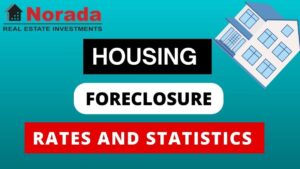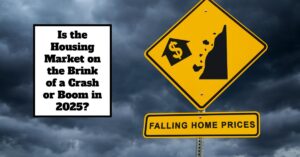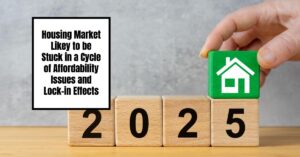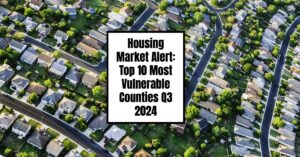The current housing market landscape in the U.S. has been the subject of extensive discussion and scrutiny. Morgan Stanley analysts have voiced a compelling argument that U.S. homeowners are showcasing remarkable resilience, referring to them as the “strong hands” within this market cycle.
Understanding the reasoning behind this assertion is pivotal, as it sheds light on the stability and dynamics of the housing market. Let's delve into the critical factors that underpin this perspective and explore the supporting data and trends.
Don't Panic Sell! Homeowners Hold Strong in Housing Market (Morgan Stanley)
Why Homeowners Are ‘Strong Hands’
According to Morgan Stanley, several significant factors contribute to homeowners' current strong position:
The Lock-in Effect
One of the primary reasons homeowners are considered “strong hands” is due to what is known as the lock-in effect. This term refers to the phenomenon where homeowners have secured low, fixed-rate mortgages for 30 years, disincentivizing them from selling their homes. Unlike other debt instruments that may fluctuate with market conditions, fixed-rate mortgages provide stability. This long-term financial commitment ensures that homeowners avoid the volatility and unpredictability of rising interest rates, making them less likely to offload their properties.
Affordability and Financial Stability
The argument for homeowners’ strength is also anchored in the issue of affordability:
- Despite significant decreases in housing activity and existing home sales, national home prices have remained relatively stable.
- Homeowners with fixed-rate mortgages are protected from the direct impact of deteriorating affordability, as their monthly payments remain constant.
Morgan Stanley analysts highlight that this stability has created a group of homeowners who can weather economic fluctuations without being forced to sell their homes at distressed prices.
Supporting Data and Statistics
To further substantiate this argument, Morgan Stanley has provided several key data points. Let’s closely analyze these figures:
Mortgage-Free Homeowners: Financial Independence
39% of U.S. homeowners are mortgage-free. This substantial figure is indicative of a large portion of homeowners who do not face the pressures and uncertainties related to mortgage rate fluctuations. These mortgage-free homeowners contribute significantly to the stability of the housing market, as they are not at risk of foreclosure or selling due to financial distress.
Prevalence of Fixed-Rate Mortgages
Fixed-rate mortgages are a cornerstone of homeowners' financial stability. Among U.S. homeowners with a mortgage:
- 96% have secured fixed-rate mortgages.
- Measures introduced to curb risky lending practices have led to a shift towards these stable mortgage products.
- Before the 2008 financial crisis, approximately 80% of U.S. subprime mortgages were adjustable-rate, posing higher risks to borrowers.
This dramatic shift towards fixed-rate mortgages ensures that most homeowners have predictable and manageable monthly payments, thereby contributing to overall market stability.
Interest Rates: A Crucial Factor
Another crucial factor is the interest rates on these mortgages. Among U.S. homeowners with a mortgage:
- 76% have an interest rate below 5.0%.
These low interest rates reduce the financial burden on homeowners, making it easier for them to maintain their monthly mortgage payments without financial distress.
The Broader Economic Context
While the data highlights the robustness of homeowners' financial positions, it's essential to consider the broader economic context:
Housing Market Stability
Morgan Stanley suggests that because homeowners are the “strong hands,” there will be fewer distressed sales and foreclosures. This stability is one reason national home prices have remained relatively constant, despite a doubling in mortgage rates.
Potential Vulnerabilities
However, Morgan Stanley also cautions that many homeowners' monthly mortgage payments may be shielded from spiking interest rates, but their employment situations may not be. If the U.S. economy were to slide into a recession, the current rate hiking cycle could adversely impact recent homebuyers with less substantial savings, potentially leading to an increased risk of default and financial distress.
Credit Card Borrowers and Financial Stress
Another crucial point to consider is the impact of rising interest rates on other forms of debt:
- U.S. credit card borrowers with variable rates have seen increased financial stress and delinquencies.
- Credit card stress highlights the broader financial pressures facing many U.S. households, even if their housing payments remain stable.
Table: Delinquencies Among Credit Card Borrowers
| Indicator | Current Trend |
|---|---|
| Credit Card Delinquencies | Rising |
| Financial Stress Among Variable Rate Borrowers | Increasing |
Conclusion
Morgan Stanley's perspective that homeowners are the “strong hands” of this housing market cycle is compelling and well-supported by data. The prevalence of low, fixed-rate mortgages and the financial stability they provide help to insulate homeowners from many of the economic fluctuations affecting other segments of society. This stability explains the lack of distressed sales and the relative steadiness in national home prices.
However, the broader economic context, including potential employment instability and rising stress among credit card borrowers, suggests that vigilance remains necessary. Monitoring these indicators will be crucial for maintaining the current stability of the housing market.
Work with Norada in 2025, Your Trusted Source for
Real Estate Investing in the U.S.
Discover high-quality, ready-to-rent properties designed to deliver consistent returns.
Contact us today to expand your real estate portfolio with confidence.
Contact our investment counselors (No Obligation):
(800) 611-3060
Read More:











